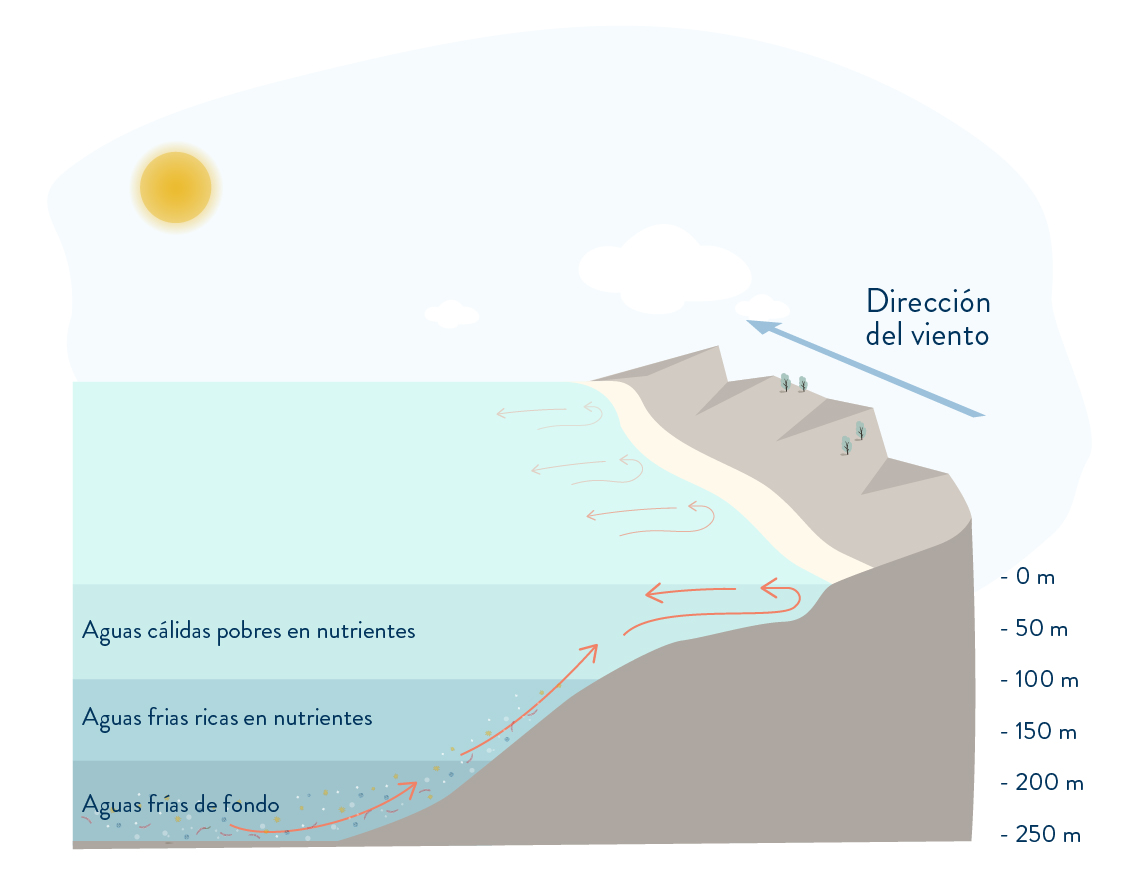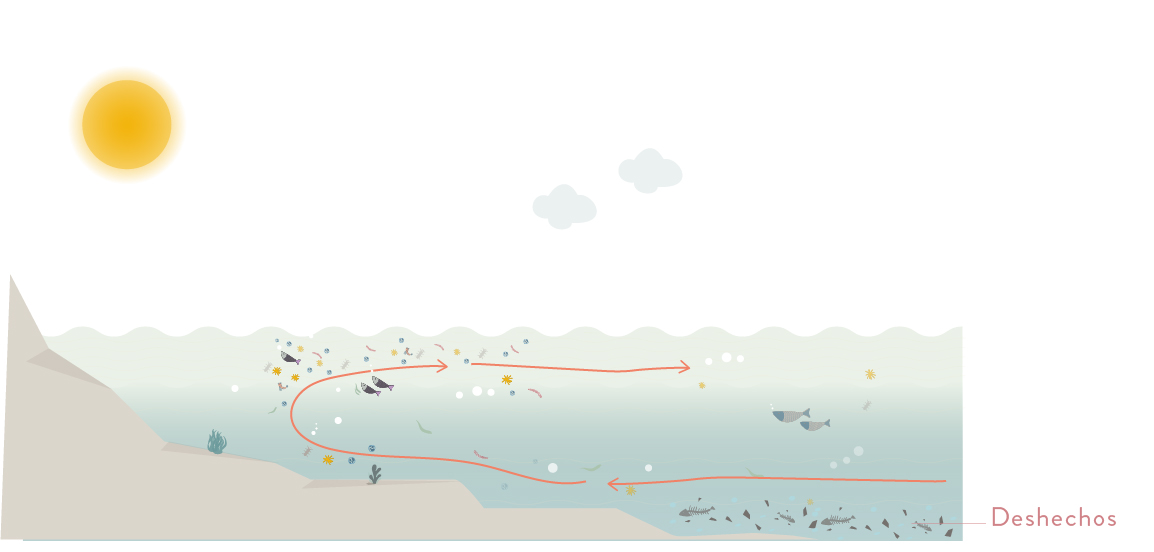LA VIDA EN LOS OCÉANOS
El sistema de corrientes oceánicas incluye movimientos horizontales y verticales y estas pueden ser ascendentes y descendentes. Esta ascensión de masas de agua profunda, se denomina afloramiento, hace subir los nutrientes acumulados en el fondo oceánico hacia la capa fótica, provocando un aumento importante en la producción de fitoplancton y por tanto de la biomasa de todos los niveles tróficos del ecosistema.


